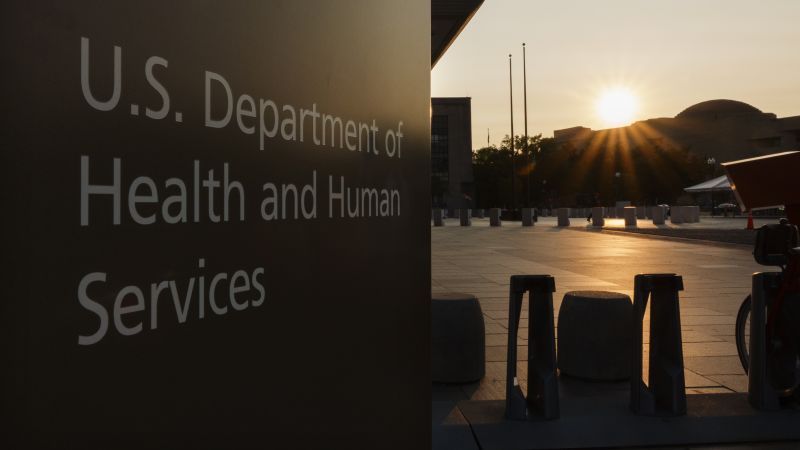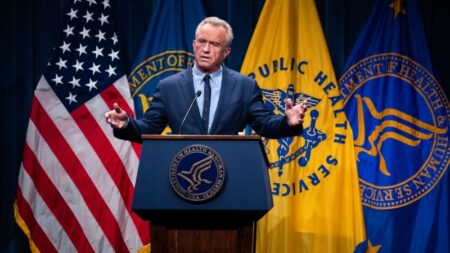In a shocking development for federal employees, especially those associated with health agencies, thousands received termination notices on Monday afternoon. This notification signalled the official end of their employment with the U.S. Department of Health and Human Services (HHS), effective as of the close of business on July 14, 2025. The mass layoffs were a culmination of ongoing legal disputes and organizational restructuring aimed at a grander vision dubbed “Make America Healthy Again,” as articulated by HHS spokesperson Andrew Nixon.
The context of these firings traces back to a prior announcement made on April 1, where preliminary notifications had indicated that these employees would be terminated. However, the process was stalled due to legal proceedings that ultimately led to a significant U.S. Supreme Court decision on July 8. The ruling signified that the HHS could initiate this reduction in force (RIF) in certain capacities, a point made clear in the email sent out to the affected employees, which expressed gratitude for their service to the American populace.
The organizational reshaping of HHS was part of a broader plan to streamline operations within federal health agencies, which included substantial layoffs—reportedly affecting around 10,000 employees across various organizations such as the U.S. Food and Drug Administration (FDA), the Centers for Disease Control and Prevention (CDC), and the National Institutes of Health (NIH). While some employees have since regained employment, the latest round of layoffs demonstrates a significant contraction of staffing within these essential public health entities.
Certain employees, however, have been spared for the time being due to an existing legal case, New York v. Kennedy. This case has granted temporary protections to workers associated with specific CDC divisions, including but not limited to the National Center for HIV and Viral Hepatitis Prevention, the National Center for Environmental Health, and several others. Notably, Judge Melissa DuBose of the U.S. District Court in Rhode Island awarded a preliminary injunction this month at the request of a coalition consisting of 19 states and the District of Columbia. Such judicial decisions effectively shield these particular employees from immediate separation as the larger reorganization efforts unfold.
Despite the court’s intervention, it seems likely that legal challenges relating to the layoffs will continue. Experts suggest that many HHS employees still fall under protection due to this ongoing case, leading to potential disputes over the legality of the future staffing reductions. Michael Fallings, a managing partner with expertise in federal employment law, indicated that while the administration now has a green light to proceed with layoffs following the Supreme Court’s ruling, the nuances of existing protections may further complicate the process.
In a striking parallel, the Supreme Court has also permitted the Department of Education to continue with its mass layoffs. Reports indicate that notices were distributed to employees about the impending terminations, scheduled for August 1. This decision indicates a broader willingness within the court to allow the Trump administration to proceed with workforce reductions that had been stalled by lower court orders, providing agencies with a sense of urgency to re-establish their operational capacities.
Andrew Twinamatsiko, a director at the Center for Health Policy and the Law at Georgetown University, noted the implications of recent court decisions on various agencies, emphasizing that they are now emboldened to act in accordance with the newly interpreted legal landscape. This series of events marks a critical turning point for federal employment policies as agencies reassess their staffing models amidst changing governance directives.
The Supreme Court, while permitting government agencies to implement their RIF plans, notably refrained from commenting on the legality of specific plans. This leaves the door open for future legal disputes should layoffs prove too disruptive for agency obligations. Such complexity arises from an executive order issued by Donald Trump in February, which initiated a sweeping reorganization effort across federal institutions, igniting significant backlash and legal contention from numerous unions and advocacy groups.
The unfolding scenario suggests a turbulent time ahead for the federal workforce, especially in the realm of health and education policy sectors. As agencies realign their function in response to new directives and legal rulings, the impact on the employment landscape remains an area of keen observation and concern for both workers and policymakers alike.












